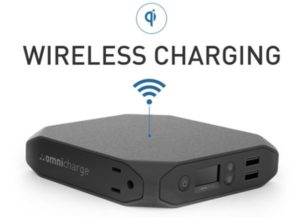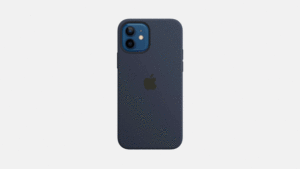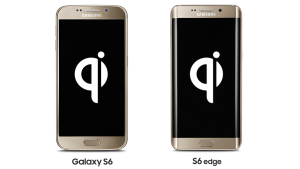How can Qi be retrofitted? Universal Qi adapters are intended for all smartphones with a micro-USB port. They can retrofit almost all Android devices with the Qi standard – how this looks like in practice and where the differences are with current, universal Qi receivers, we have examined in more detail in this review. Besides those with a micro-USB connection, there are, of course, also Qi receivers for Apple’s iPhone with a Lightning connection. We checked them too and will give you a full introduction to upgrading with Qi Wireless Charging.
Not every smartphone is equipped with the Qi standard for wireless charging. However, some models are designed by the manufacturer for retrofitting and have charging contacts for Qi receivers under the battery cover on the back of the device. For these models and smartphones with reliable third-party Qi accessories, see the Qi smartphone list.
How to retrofit your smartphone or tablet with Qi Wireless Charging
With these three steps you can easily upgrade your Smartphone or tablet with qi wireless charging:
- Select suitable Qi Adapter (also in the form of Qi Cases)
- Attach the Qi Receiver (possibly behind a cover or sleeve)
- Charge your Smartphone with a Wireless Charger
However, many smartphones are not designed by the manufacturer for wireless charging or retrofitting and do not have charging contacts for Qi adapters – also known as “wireless charging receiver.” These models can be retrofitted with a Qi receiver with a micro-USB connector. The Qi adapter is placed either under the battery cover or under a protective cover – depending on how much space is left under the battery cover. Such universal Qi receivers have now been on the market for around two years. In principle, they can be used to retrofit not only smartphones but also tablets with wireless charging.
What should I pay attention to when retrofitting Qi?
We selected five of the currently most popular Qi receivers or wireless charging pads in our test and, apart from general criteria, we especially evaluate the loading speed of the respective receiver modules. This main criterion of Qi receivers significantly determines the user experience of wireless charging via Qi. The more output power a Qi receiver has, the faster the smartphone is charged – the standard range currently extends from 500mA to 1000mA. The output power of the Qi receiver also determines whether a smartphone will charge at all when it is consuming a lot of energy.. Adapters with 500mA, for example, cannot maintain or continue to charge the battery level of many smartphones when using navigation apps (GPS+mobile phones).
How does a Qi receiver work?
Furthermore, we have taken a closer look at the inner workings of the respective models to conclude the quality of craft. Of course, you should never do this at home under any circumstances, as this could damage the Qi receivers. A Qi Receiver works with a inductive coil that receives the energy sent wirelessly from the charging pad and gives it to the smartphone battery. Our test mobile phone has a 2100 mAh reliable battery and was switched on during the charging processes (5%-100%) or left in normal operation (Wlan activated, screen off). The Qi charging station used in the test is the EasyCHEE FC80, together with a 5V/2A USB power supply.
Review: Five popular Qi Receiver
In this review, we took a closer look at five of the currently most popular universal Qi adapters with micro-USB connection:
1. Universal-Qi Wireless Charging Pad – Destore
Output: 5V/ 1000 mA
Charging time: 2 hours 17 minutes
The “Universal-Qi Wireless Charging Receiver” (Model: U01) from DESTORE was delivered by the seller YLC digital after two working days and had the highest price of our five test devices. The dimensions of the rectangular pad are 63 x 45 mm – the total length with cable is 10cm. The plastic cover protrudes slightly at the sides and can be shortened to the width of model no. 3 if required. The technology of the Qi module is covered with a very thin and flexible plastic and fits under the battery cover of our test device.
When purchasing this product, you should pay attention to how the Micro-USB socket is positioned on the smartphone. There are two versions of the Qi receiver available, each with a different plug position. The Micro-USB plug of the Qi receiver is made of plastic and has a metalhead in golden color, which protrudes about 1 mm from the socket. The 2100 mAh battery of the test device was charged from 5% to 100% in 2 hours and 17 minutes.
2. kwmobile universal Qi charger
Output: 5V/ 900 mA
Charging time: 2 hours 3 minutes
The “kwmobile universal Qi charge receiver” (Model: 21743) from kwmobile was delivered by the seller KW-Commerce after two working days and is one of the expensive models in this test. On the packaging of the adapter, a power of 750mA is indicated, but the pad itself is labeled with 900mA output power. The packaging in this case is from an older model.
The dimensions are 62 x 45 mm (with cable 10cm length), and it’s the only model without a glue joint to fix it on the back, but this is not absolutely necessary, and can be retrofitted quickly. The micro-USB plug is only offered in the standard positioning, suitable for all Samsung models (wide side down). In contrast to all other models, the Qi adapter’s plug is completely made of metal, seems a bit larger and reaches about 1.5 mm out of the socket. The interior of the “kwmobile adapter” also differs from the other models and seems to be a proprietary development. As you can see in the pictures, the coil is embedded in plastic, and the Qi receiver appears to be of higher quality.
3. iDOO Ultra Slim universal Qi Wireless Receiver card
Output: 5V/ 500 mA
Charging time: > 3 hours
The “iDOO Ultra Slim universal Qi Wireless Receiver Card” sold by MEDIAPLATZ was delivered after two working days and had the lowest power of 500mA in our test. The dimensions are 61 x 36 mm, making it the slimmest model. Unlike the other models, the Micro-USB plug is wholly made of plastic, rounded at the sides, and protrudes about 2 mm from the socket. Looking under the foil, this model differs from the other adapters like the one above – everything seems to be “made of one piece,” and the receiver coil is embedded in plastic.
In our test, we noticed first of all that it took noticeably longer to start the charging process when we put the smartphone on than it did with the other models – the “iDOO Receiver Card” takes about 3 seconds. Unfortunately, the version with mircoUSB connector in the middle is currently not available.
4. Vococal – Internal inductive Qi charge receiver
Output: 5V/ 1000 mA
Charging time: 2 hours 21 minutes
The “Vococal – Internal Inductive Qi Charge Receiver” was sold by vococal-tech and delivered after about five working days, a much shorter delivery time than stated at that time. The power is 1000 mAh, and the dimensions are 70 x 44 mm. In the test, there was nothing to complain about – the Vococal Qi-Receiver works perfectly.
When you “look under the hood,” you notice a receiver coil that is quite large compared to the other models but works just as reliably. The charging process starts quickly, and the charging time is also satisfactory.
5. Qi wireless receiver micro5pin phone universal
Output: 5V/ 1000 mA
Charging time: approx. 2 hours 31 minutes
The “Qi Wireless Receiver Mikro5pin” is our cheapest model and was delivered directly from China via the seller “March Barley” after about one week, which was also well before the indicated time. The power is 1000 mAh, and the dimensions of the model are 72 x 43 mm.
In our test, we noticed fluctuating charging times, which is probably related to the positioning of the smartphone and occurs more often with this model. The charging time for models with 1000 mAh is highest for this Qi receiver at 2.5 hours, but the price is by far the lowest of all the models in the test.
Retrofitting Qi on a mobile phone is quickly done
The Qi receivers we tested all serve their purpose. However, for a good experience in everyday life, we recommend using an adapter with a power of at least 900 mAh. We are also curious to see when the first Qi receivers for fast, wireless charging with up to 15 watts of output power will appear on the market. In practice, it is often suitable to use a protective cover under which the Qi adapter can be placed well. In rare cases, the Qi receiver can also be placed under the battery cover of the smartphone.
What should you pay attention to with the Wireless Charging Receiver?
Basically, you should not plug in and unplug the connectors of the Qi receivers too often, as they are relatively sensitive due to the flat connection cable and can break off. It is best to plug them in once and fix the cable and receiver firmly in place. The micro-USB plug on the kwmobile adapter is completely made of metal and rounded – on the iDoo it is completely made of plastic. On the other models, the plug is made of plastic with a metalhead, although some of its edges are slightly sharp. In our test, we are delighted with the first two models from kwmobile and Destore, whereby the kwmobile Qi adapter makes the highest quality technical impression.
Conclusion to on this Review: Retrofit Qi – Cover or Charging Receiver?
In addition to Qi receivers with Micro-USB connector or special Qi sleeves, there are, of course, also receivers for the Apple iPhone or for smartphones with USB Type C connector. So the decision has to be made – is a simple Qi receiver sufficient for an existing case or do I buy a complete solution in the form of a Qi case? As this test is a bit older now, it is always worthwhile to have a look at the current bestsellers in the field of Wireless Charging Pads
» Best Wireless Charging Receiver



 (6 votes, average: 4.00 out of 5)
(6 votes, average: 4.00 out of 5)



Hello this is my email I would like you to confirm I just brought this Samsung Galaxy A51 (Type-C) Universal Wireless Qi Charging Receiver Card Coil Patch 800mA does it’s wireless charger need to be the same numbers? Thanks in advance my email.